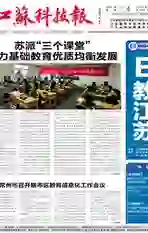一起重新构想我们的未来
2022-04-28
Expanding knowledge, data, and evidence
Successful knowledge production for the futures of education will need to become consciously inclusive, socially and culturally diverse, inter-disciplinary and inter-professional, and able to foster communication, collaboration, ownership and mutual learning.
Big data and the changing nature of knowledge
Technological advancements have generated new assumptions about what knowledge is and how it should be generated. Our current technologies have contributed to expectations that information, and the knowledge and understandings it gives rise to, will be big (drawn from multiple data points, not singular experiences), searchable (retrievable and easy to find), storable (able to be archived), transmissible (seamlessly sharable), and individualizable (optimized for personal consumption). Each of these qualities merit careful examination because they frame and mould ideas about education, including its purposes and processes, opening some possibilities and closing others.
Greater access to digital tools has given researchers unprecedented power to organize, synthesize, and process wider educational data sets than ever before. The power of digital methods, instruments, data collection and storage, and algorithmic data processing has kindled great enthusiasm in terms of how they can be used to advance understanding, practice and effectiveness of educational methods and approaches. Statistical data processing and charting, geographic mapping, network mapping, pattern seeking, and keyword tracing are among the tools that researchers can deploy. There is also great opportunity for research on the increasingly digitized aspects of our educational lives.
As with any tools, it is important for researchers to clarify what can and cannot be achieved through digital research instruments. Depending on the purpose of a given inquiry, more data is not necessarily better or more precise. The insights that computers can arrive at are not the same as those available to human beings. Sometimes software can reveal surprising and illuminating findings because of their ability to process data at greater scales and paces than humans ever could through analogue methods. Other times, human minds can understand contexts, meaning, values, and implications in ways far too sophisticated for AI.
As researchers draw on the immense potential of big data and digital tools in education, we must resist being enamoured with digital analytic software for the presentation of presumed objectivity. In particular, we need to continually evaluate the biases and blind spots of our digital research methods from a lens of justice and equity, to account for what lies beyond the purview of its programming. If these trends continue, there is considerable danger that in 2050 much of our knowledge will have become reshaped into quantitative, algorithm-friendly, molecular, easily storable, rapidly shareable forms that are only accessible through the mediation of digital devices. We should be concerned that the exploding field of AI seeks to make these properties self-sustaining, autonomous and independent of human management. The ethical risks of such ambitions will need vigilant attention over the next thirty years.
Innovating educational futures
Innovation in education reflects the ability to experiment, share, extend, and inspire others. It is possible at every site and scale, from a teacher working with an individual student or class, to school-wide or country-wide approaches. Innovation is often the fruit of much collaboration and inspiration from the experiences and successes of other educators, policy-makers, researchers, and schools in diverse contexts.
Actors within educational systems are also important sources of innovative approaches and insights. Innovations that are entirely imposed from ‘outside’ the field will necessarily be limited, or even distorted, in their insights and proposed solutions. Educational knowledge is produced and legitimated in a range of ways. Its central actors — teachers, students, principals, schools, etc. — are all participants in the production of research and innovation. Curriculum development and reform can be especially enriched through the contributions of those who use it, as they enter into deeper participation with the knowledge commons. Governments have an important role to play in this regard, providing adequate support for teachers and schools to participate in dialogue and revision of public education systems and processes.
译文
扩展知识、数据和证据
成功的面向教育未来的知识生产需要有意识地做到包容性、社会和文化多样性、跨学科和跨专业,并能够促进沟通、协作、知识所有权和相互学习。
大數据和本质特征在不断变化的知识
技术进步促使产生了关于什么是知识以及如何产生知识的新假设。我们目前的技术有助于实现这样的前景:信息及其带来的知识和理解将是巨大的(来自多个数据点,而不是单一的经验)、可搜索的(可检索且易于找到)、可存储的(能存档)、可传输的(能无缝共享)、个性化的(针对个人消费进行了优化)。这些品质中的每一种都值得仔细检查,因为它们构成和塑造了关于教育的观念,包括教育的目的和过程,创造了一些可能性,消除了另一些可能性。
更多地使用数字工具,使研究人员拥有更前所未有的能力来组织、综合和处理更广泛的教育数据集。如何利用数字方法、仪器、数据收集和存储以及算法数据处理的力量,来促进对教育方法和方式的理解、实践和有效性,激发了人们极大的热情。统计数据处理和图表、地理制图、网络制图、模式搜索和关键词追踪都是研究人员可以部署的工具。这也为研究我们教育生活的日益数字化提供了很好的机会。
与任何工具一样,研究人员必须明确,通过数字研究工具可以实现什么和不能实现什么,这一点很重要。根据给定调查的目的,更多的数据并不一定意味着更好或更精确。计算机所能获得的洞察力与人类所能获得的不同。有时,软件可以揭示令人惊讶和启发性的发现,因为它们能够通过模拟方法,以比人类更大的规模和更快的速度处理数据。其他时候,人类的大脑可以以人工智能无法理解的方式理解上下文、含义、价值观和暗示。
当研究人员利用大数据和数字工具在教育中的巨大潜力时,我们必须抵制为呈现假定的客观性而沉迷于数字分析软件。特别是,我们需要从公正公平的角度不断评估我们对数字研究方法的偏见和盲点,以解释其编程范围外的内容。如果任由这些趋势继续发展,那么在2050年,我们的许多知识将有相当大的危险,它们将被重新塑造成定量的、算法友好的、分子的、易于存储的、快速共享的形式,而这些形式只能通过数字设备来实现。我们应该关注的是,人工智能领域的爆炸式发展试图使这些知识属性自我维持、自主并独立于人类管理。在接下来的三十年里,我们需要警惕这种野心的道德风险。
创新教育的未来
教育创新反映了实验、分享、扩展和激励他人的能力。从与单个学生或班级合作的代课教师,再到全校或全国的方式,任何地点和规模都有可能。创新往往来自大量合作的成果,以及来自其他教育工作者、决策者、研究人员和学校在不同背景下的经验和成功的启发。
教育系统中的参与者也是创新方法和见解的重要来源。完全来自领域“外部”的创新在其见解和提出的解决方案中必然会受到限制,甚至扭曲。教育知识是以一系列方式产生和合法化的,其核心参与者(教师、学生、校长、学校等)都是研究和创新成果的参与者。课程开发和改革可以因使用它的人的贡献得到丰富,因为他们更深入地参与知识共享。政府在这方面可以发挥重要作用,为教师和学校提供充分的支持,以参与公共教育系统和进程的对话和修订。
